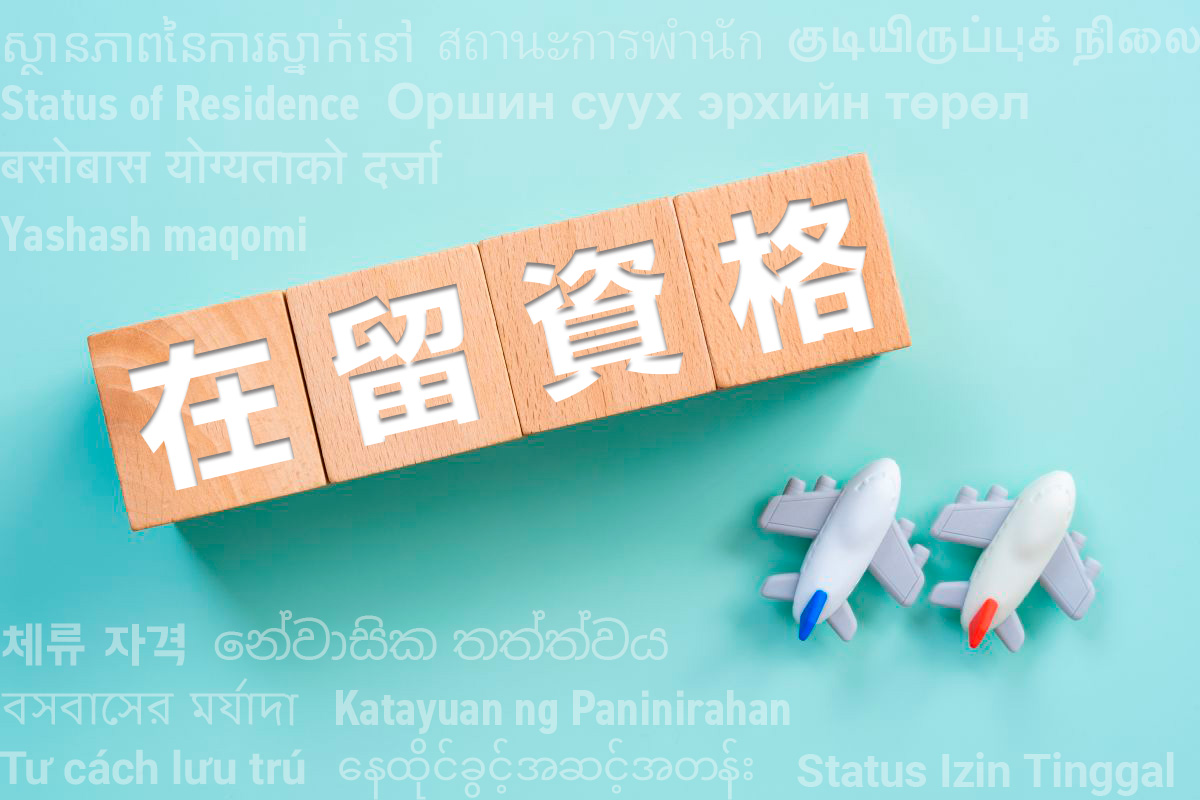- やさしい日本語
- ひらがなをつける
- Language
We provide multilingual content through machine translation. Translation accuracy is not 100%. About the multilingualization of the JAC website
- About JAC
- JAC Membership Information
- Specified Skilled Worker Acceptance
- Specified Skilled Worker Overview of the system
- 10 Mandatory Assistance for Foreigners
- Online individual consultation
- Seminar on Coexistence with Foreign Nationals
- Leading examples of host companies
- Case studies collection "Visionista"
- Foreigner's Voice
- Foreign Resident Acceptance Manual / Q&A
- Useful column "JAC Magazine"
- Acceptance support services
- Specified Skills Acceptance Support Service
- Health and Safety "Online Special Training"
- Safety and health “skills training”
- "Temporary Return Support" to ease the burden
- CCUS charge support
- Free Japanese language courses
- Education and Training Support
- Subsidy system for obtaining qualifications
- Support system for promoting the accumulation of employment history
- "Post-acceptance training" to deepen understanding of the system
- Compensation system for Specified Skilled Worker (i)
- freeJob matching
- The Specified Skills Evaluation Exam
- Home
- JAC Magazine
- JAC Initiatives and Activities Report
- Report on the "Plain Japanese Course Application (2)" for Japan employees
- Home
- JAC Magazine
- JAC Initiatives and Activities Report
- Report on the "Plain Japanese Course Application (2)" for Japan employees

Report on the "Plain Japanese Course Application (2)" for Japan employees
Since July 2024, JAC has been holding the "Plain Japanese Course" as a seminar for Japan employees.
Even if you can control Plain Japanese perfectly, you can't bridge the gap in your heart without a cross-cultural understanding.
In the third installment, "Application (2)", we introduced other ways to communicate smoothly in addition to Plain Japanese.
Plain Japanese with a gentle heart
"Plain Japanese Course Application (2)" was held. This course was taught by Tomomi Kawamoto of ORJ Co., Ltd.
212 people participated online.
At the beginning, we started with a review of the past two reviews and reviewed the basics and applications of Plain Japanese.
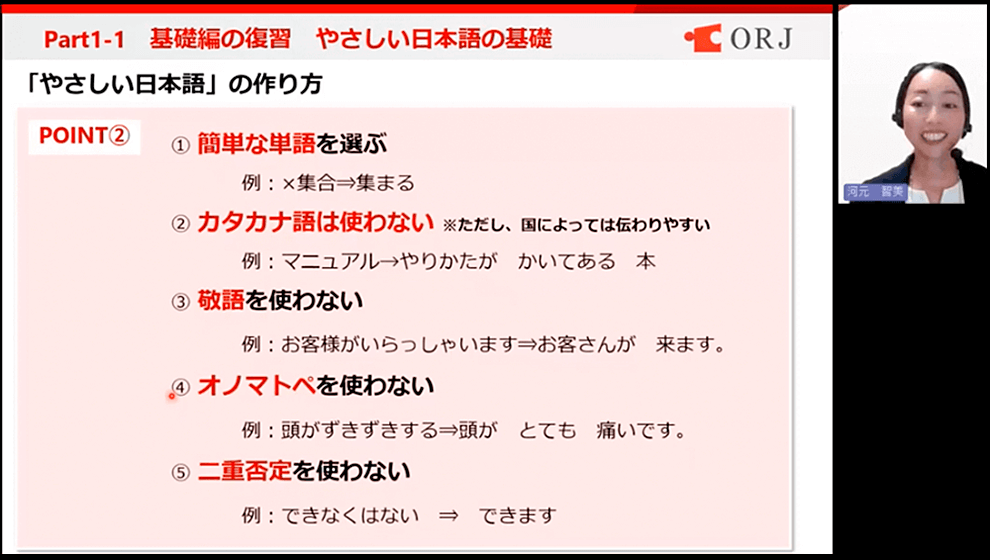
Review of the Basics
"Plain Japanese" is a Japanese for foreigners to (1) easy (easy) (2) gentle (considerate).
The key to how to make Plain Japanese is the law of scissors.
What is the law of scissors? Application (1) In the report
Other ways to write dates
- Do not use the Japanese calendar
It is a difficult task to convert the unfamiliar Japanese calendar into the Gregorian calendar in your head. - The date is written as "what month what day"
There are countries where the name is read in the opposite way to Japan, so writing it with a slash "/" can lead to mistakes.
I learned things like:
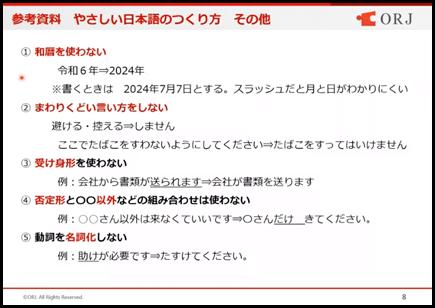
Review of Advanced Part 1
I learned how to give clear instructions.
- Avoid ambiguous expressions
Instead of using vague expressions such as "If possible, I would like you to do XX by a certain time," be clear and state "I would like you to do XX by a certain time." - How to check instructions
After giving instructions, asking questions like "Do you understand?", "Is it okay?", or "Can you do it?" will just result in an echo of "I understand," "It's okay," or "I can do it," so it's a no-no.
I learned things like
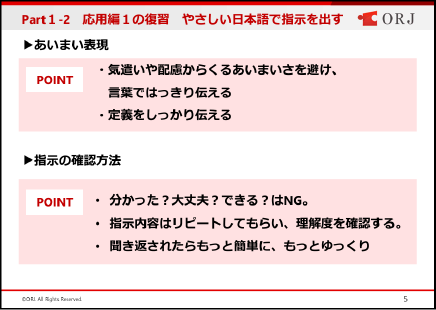
So let's start with a look back at what has happened so far.
No matter which session you join, you will never be unable to keep up with the course content, so please feel free to join us.
Now, we will finally learn the contents of “Advanced Part 2”.

Let them say, "I don't know."
Elicit the response, "I don't know."
If you can get the other person to say "I don't understand" rather than "I understand," it's proof that you have communicated.
Ask gently and put the other person at ease. Foreign workers get very nervous just talking to Japanese people. Try to use facial expressions and a tone of voice that will not make them nervous.
〇 Prepare an environment where you can speak Japanese comfortably
To do this, you can start by "including the person's name in the greeting." If someone says "Good morning, Mr./Ms.", it warms your heart a little. Let's start with something simple.
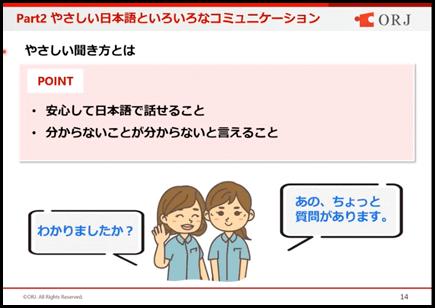
〇Plain Japanese and various communication
We have introduced a checklist of items to ask, "Are you doing this?"
- Greeting/returning greetings
- Calling out to me by name
- Have a willingness to listen
- Being able to see the other person's face and eyes and listen
- Listen to the other person's story without interrupting them
- Being able to say "Please say it again" if the other person doesn't speak well the first time
- He talks by showing photos, illustrations, actual items, etc.
- The questions are short and easy to answer (when is it, where is it, who is it)
- I try not to scold people in front of others.
- I try not to get emotional
- I try not to use offensive language
- Avoid touching the head or body
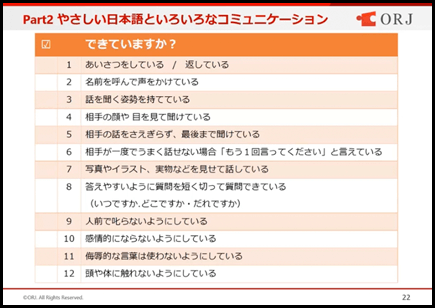
Consider what you can do in your own company
In response to the request to "know what initiatives can be implemented at your company," we introduced key points to consider when educating Japanese staff and holding training sessions for foreigners, as well as ideas for creating rules tailored to each workplace.
We also discussed how relying too much on interpreters can hinder progress in your Japanese studies, and what to be careful of when asking for an interpreter.
We also introduced efforts being made by other companies to help employees pass the Japanese Language Proficiency Test (JLPT), as well as on-site methods of evaluating Japanese language proficiency that do not rely on tests.
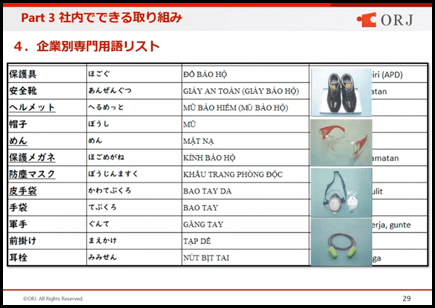
In response to your feedback, we're starting again with the basics!
The "Plain Japanese Course" will continue.
Reflecting the feedback we received from everyone, the second cool of the basic edition (October 17), the application edition (1) (November 14), and the application edition (2) (December 19) will begin.
In this participant survey,
- At a similar seminar, I was able to understand in just one hour something that I hadn't been able to understand clearly even after listening for over 10 hours.
- It's specific and easy to implement.
There were also some happy comments like this.
In addition, the improvements include:
- I would have liked more examples that fit the situation.
- As with the previous application part 1, the participatory approach made it easier to understand because you had to think for yourself.
We also received comments such as:
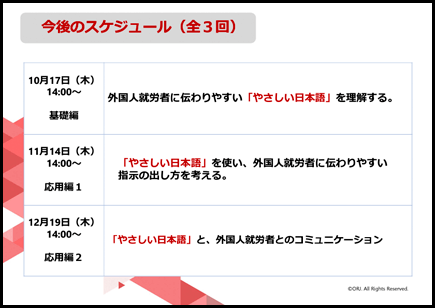
We are also thinking of examples specific to construction sites so that you can learn "Plain Japanese" according to your situation.
The "Plain Japanese Course" is a "Foreign Symbiosis Course" for Japan employees, and is developed as a practical course with cross-cultural understanding.
We look forward to your participation.
"Foreigner Coexistence Course" for Japan Employees

お問合せ:(株)ORJ 担当:三浦
e-mail:
Tel:
090-3150-0562
This article is a report on the "3rd Plain Japanese Course Application (2)" held on Thursday, September 12, 2024.
Seminar Video
Seminar Materials
Plain Japanese Course Application (2) Seminar Materials 240912.pdf
Report on the "Plain Japanese Lecture" for Japan Employees
I wrote the article!
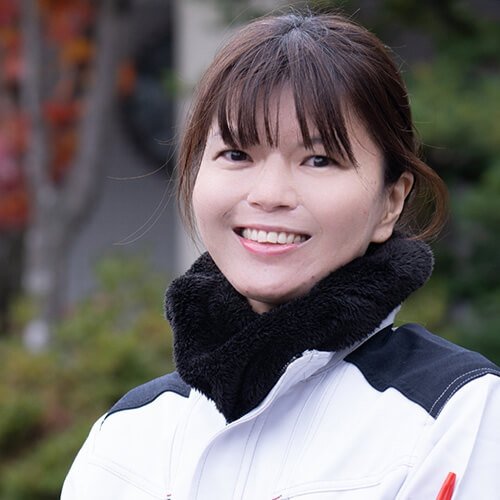
Japan Association for Construction Human Resources Manager, Management Department (and Research Department)
Motoko Kano
Cano Motoko
Born in Aichi Prefecture.
He is in charge of public relations, research and investigation, and is the person behind social media.
We update our social media accounts daily with the desire to make people fall in love with Japan, to spread the appeal of construction from Japan to the world, and to ensure that Japan's construction industry continues to be the industry of choice around the world.
He is also engaged in research into the feasibility of implementing skills evaluation exam in Asian countries, and is conducting interviews with local organizations in each country.
Related articles
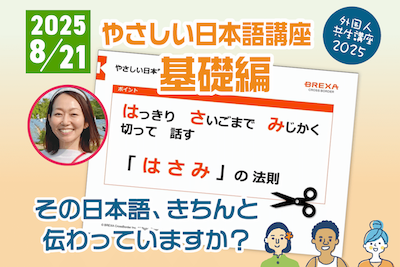
"Foreign Symbiosis Course 2025" for Japan Employees Plain Japanese Lecture (Basics) Report
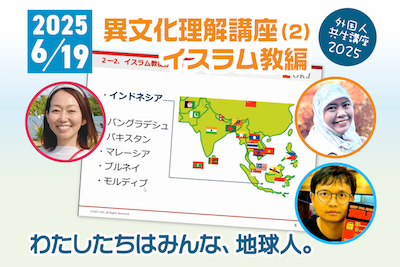
Report on the "Foreigner Coexistence Course 2025" for Japanese Employees: Intercultural Understanding Course (2) Islam
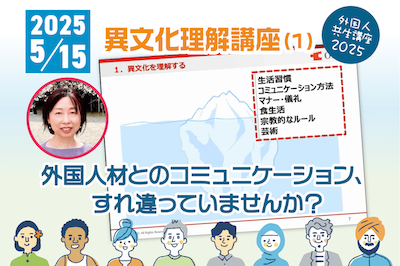
Report on the "Foreigner Coexistence Course 2025" Intercultural Understanding Course (1) for Japanese Employees
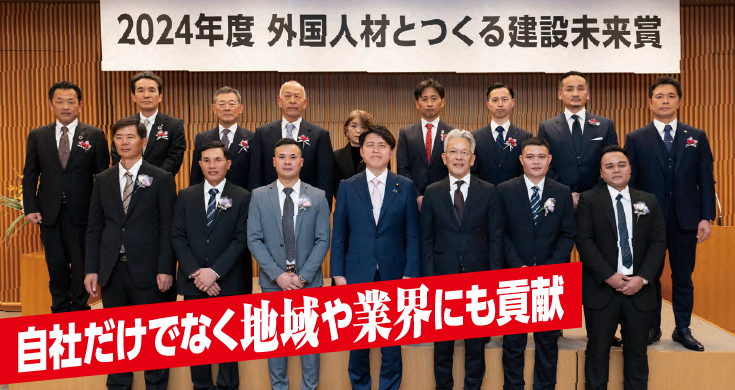
FY2024 "Construction Future Award with Foreign Talent" <Accepting Company/Organization Category> Award Ceremony Report














